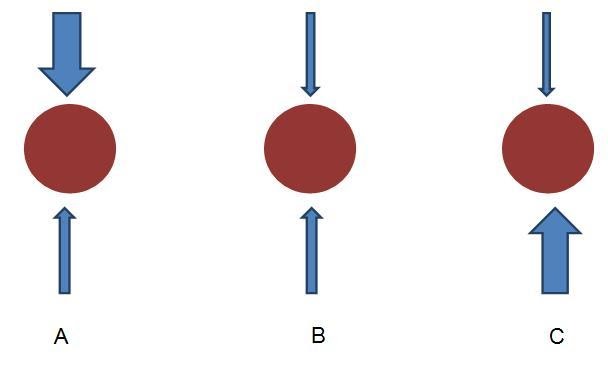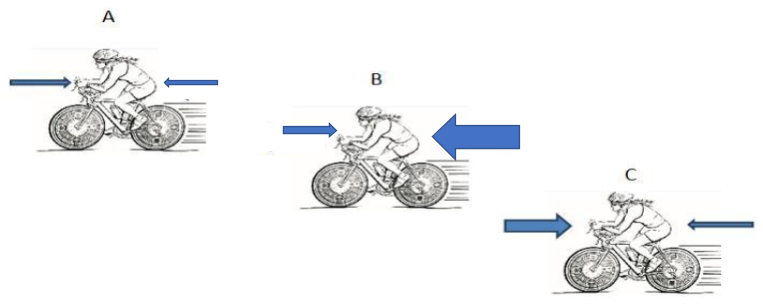
EdPlace's Year 9 Home Learning Chemistry Lesson: Forces
Looking for short lessons to keep your child engaged and learning? Our experienced team of teachers have created English, maths and science lessons for the home, so your child can learn no matter where they are. And, as all activities are self-marked, you really can encourage your child to be an independent learner.
Get them started on the lesson below and then jump into our teacher-created activities to practice what they've learnt. We've recommended five to ensure they feel secure in their knowledge - 5-a-day helps keeps the learning loss at bay (or so we think!).
Are they keen to start practising straight away? Head to the bottom of the page to find the activities.
Now...onto the lesson!
May the force be with you!
You probably haven’t ever given it much thought, but take a second to contemplate how we are able to do simple things like run, sit still, change direction. Well, forces play a big part. Even if we sit as still as we can without moving a muscle, forces are acting upon us to keep us there. Trying to get your head around things that we can’t see is often quite tricky, so we'll try to give you a few little activities to do with your child to get your heads around it. We're confident that if you complete these activities your child will be able to:
1) Understand forces needed to cause objects to stop or start moving or to change their speed or direction of motion
2) Apply this understanding
3) Explain this process back to you (if they've really cracked it!)
Step 1: Understand the Scientific Terminology
We are going to need to use some terminology when we discuss forces, so you’ll need to be familiar with the following:
Force: A push or a pull. The unit of force is the newton (N
Force diagram: shows the forces acting on an object, using arrows to show the direction and size of the force
Balanced forces: When two forces acting on an object are equal in size but act in opposite directions
Unbalanced forces: When two forces acting on an object are not equal in size
Resultant force: The overall force acting on an object
Step 2: Recap
Forces are pushes or pulls. They can be balanced or unbalanced. Forces can make objects move, speed up, slow down or change direction. But forces also act on objects to keep them still too. Some examples of forces that you have probably heard about in everyday life are gravity and air resistance. Forces are measure in Newtons (N). We use arrows to show the direction in which the force is acting. The bigger the arrow, the bigger the force!
If two forces are balanced, it means the forces are the same size but are acting in opposite directions. If two balanced forces are acting on an object, that object will not change its motion. If it is still, the object will stay still or if it is moving, it will continue moving in the same direction and at the same speed. Most people assume that if something is not moving, it has no forces acting on it, but it's important to remember that something that is stationary has balanced forces acting upon it, to keep it still!
For example, when you stand on the ground, the reaction force from the ground balances your weight. The ground pushes up against you. The reaction force is what you feel in your feet as you stand still. Without this balancing force you would sink into the ground (obviously this example doesn’t apply if you’re standing in quicksand!)

Step 3: What's a resultant force?
So, we’ve recapped the basics of forces. Now let’s turn our attention to the focus of this bit of learning we are meant to be doing today. When two forces acting on an object are not equal in size, we say that they are unbalanced forces. Unbalanced forces change the way something is moving. They can make objects: start to move, speed up, slow down or change direction.
The overall force acting on an object is called the resultant force. If the forces are unbalanced, an object will move in the direction of the resultant force. The change in the motion of an object depends upon the size of the resultant force and the direction of the resultant force.

In picture A, the forces are unbalanced, and the downward force is much greater than the upward force so the ball will move quickly in a downward direction. In picture B the upward force is slightly bigger than the downward force so the ball will move upwards but very slowly. In picture C, the upward force is much greater than the downward force so the ball will move up quickly, in the direction of the resultant force.
Get a light ball (or if you haven’t got one to hand just a screwed up ball of paper will do, and sit opposite someone else at a table. Put the ball between you and try the following scenarios, noting what happens to the ball’s speed and direction of movement. Put the ball back between you after each scenario.
1) You blow the ball gently, whilst your partner just sits and watches.
2) You blow the ball with as much puff as you can muster, and your partner blows the ball back at the same time, in the opposite direction, with a gentle blow.
3) Now repeat scenario b) but as the ball begins to move, your partner continue s to blow gently but you stop blowing completely.
Hopefully in scenario a) the ball moved towards your partner at quite a slow speed. The resultant force was unbalanced, so you caused the ball to start to move. But in scenario b), I imagine it moved in the same direction but with quite some speed! But in scenario c) hopefully, the ball started to move towards your partner then did an about-turn and started to come towards you. The resultant force would have changed when you stopped blowing which caused the ball to change direction.
Try to think about some everyday examples that you can apply your knowledge to, where unbalanced forces have caused you to start moving, speed up, slow down or change direction.
Step 4: Apply Your Knowledge to New Examples
Look at the image below and have a go answering the following together.
1)

Although the direction of movement remains the same, describe what is happening to the speed of the bike in A, B and C.
2)

Are the forces on the skydiver balanced or unbalanced?
3)

Mark thinks that the yellow car is accelerating in this picture. Is he right? How do you know?
Step 5 - Putting it into Practice
Now, you’ve covered this together why not put this to the test and assign your child the following 5 activities in this order.
All activities are created by teachers and automatically marked. Plus, with an EdPlace subscription, we can automatically progress your child at a level that's right for them. Sending you progress reports along the way so you can track and measure progress, together - brilliant!
Activity 1 - Forces in Everyday Life
Activity 3 - Balanced and unbalanced forces
Activity 4 - Force and velocity
Activity 5 - Understand Newton's First Law
Answers
1) A=constant /steady speed, B=Accelerating, C=Decelerating
2) Unbalanced
3) Mark is wrong, The resultant force is acting backwards so the car will be slowing down, or reversing.
Keep going! Looking for more activities, different subjects or year groups?
Click the button below to view the EdPlace English, maths, science and 11+ activity library

.jpg)






